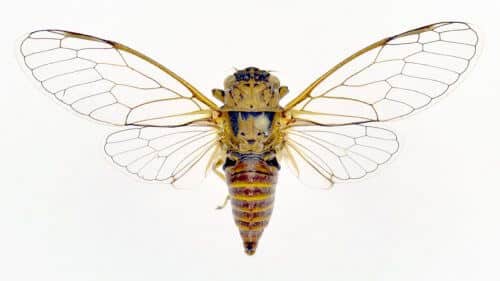A look at research that examines the capabilities and production methods of tiny artificial wings inspired by insects, and brings a new method and conclusions to the field

During the last decade, tiny winged aircraft, built inspired by insects (originally FMAVs), have aroused much research interest due to the high applicability potential in cases where advanced technologies are needed for search and rescue efforts in disaster areas.
The artificial wings are significant for producing sufficient lift for launching FMAVs. From a bionic point of view, the excellent aerodynamic properties of the insect wing are significantly related to the morphology and mechanical properties of the wing.
The morphology of the wing includes the shape of the wing, the patterns of the wing veins, the thickness, the three-dimensional architecture and more. It was found that different variations of the wing shape and thickness have a substantial effect on the aerodynamic lift of the insect wings. In addition, according to research observations, the XNUMXD architecture is able to produce more lift when it prevents flapping at the wing tips.
It was also found that in addition to the morphology, the mechanical properties of the wing such as its flexibility are able to produce a strong burst of lift during flapping movements. Important mechanical properties of the wing, which directly affect the aerodynamic performance, include 'flexural stiffness', which describes the relationship between shape deformation and aerodynamic force - maximum shape deformation which reflects the ability to bear many deformations without breaking to the natural frequency, which reflects the general performance under Inertia force and aeroelastic effects.
When the circumference of the artificial wing is reduced to five cm, it is no longer possible to apply manual production methods in artificial insect wings with complex wing vein patterns. For wings of this size, several manufacturing methods have been proposed to mimic the biomimetic wing morphology, but all are flawed. For example, the use of a laser has been proven, on the one hand, as an effective technique for producing artificial insect wings, but on the other hand, in the result obtained, the vein pattern of the wing is abstract compared to a real insect wing, so research is still needed to produce the morphology of artificial insect wings.
The research in question focuses on manufacturing and testing methods of artificial cicada wings, imitating their morphology and mechanics. The research uses a laser cutting technique while fusing a multi-layered material, based on carbon fiber and thin Mylar, in order to imitate the pattern and shape of the wing veins. The capacity of the manufacturing method for XNUMXD wing architecture and diverse wing types is also shown. In order to investigate the effect of the vein thickness on the wing properties, the flexural stiffness, the maximum deformation rate and the natural frequency are tested using a dedicated non-contact stimulation system.
Combined with existing manufacturing methods, the proposed method is demonstrated in a simpler process, but is improved and resembles a real cicada wing.
The conclusions of the study are that it is possible to obtain the morphology of an artificial cicada wing with the help of a high-precision laser cutting technique. This manufacturing method is able to realize a XNUMXD wing architecture with curves or folds by controlling the XNUMXD shape of the wing veins during the hardening and enhancement process. In addition, the method also demonstrates promising versatility for diverse wing types.
The results of the mechanical test reveal that the cicada's artificial wing has excellent flexibility, and is able to withstand a high percentage of deformation without breaking (the maximum percentage of deformation reached 50%). From the test it can also be seen that the flexural stiffness and the natural frequency of the artificial cicada wing are largely dependent on the thickness of the veins. Such results provide a realistic approach to further improve wing mechanical properties by adjusting the thickness of the veins.
More of the topic in Hayadan:
